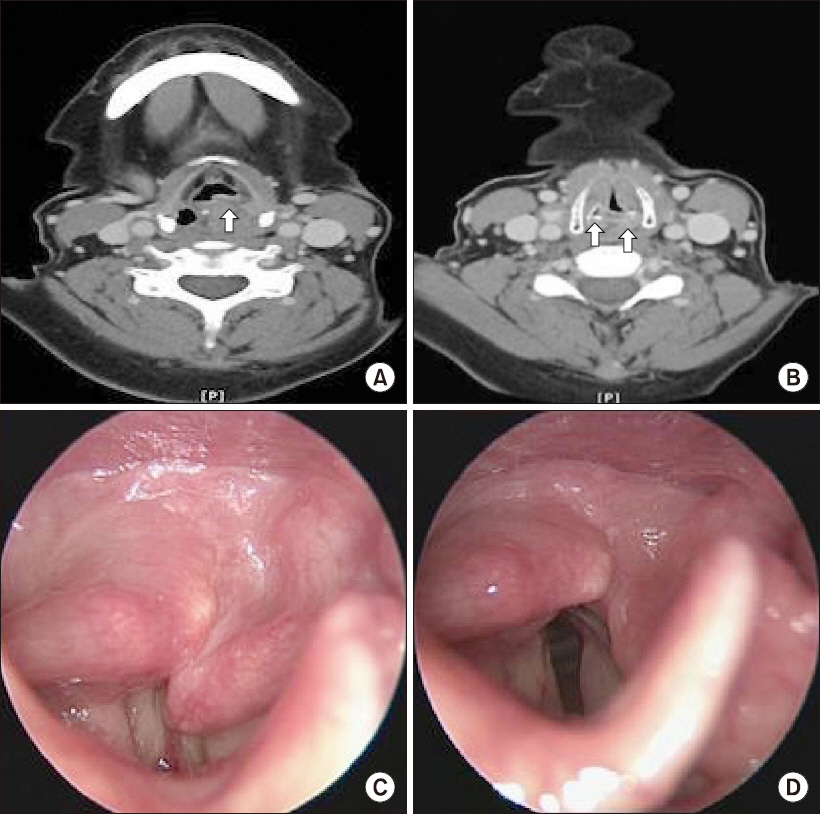Bilateral complex arytenoid dislocation
Article information

A 55-year-old woman was scheduled to undergo staging operation for endometrial cancer. She had undergone a surgery 5 years ago and did not have any specific complaints. During intubation, the Cormack-Lehane laryngoscopy grade was 2, and both vocal folds appeared to be relatively fixed. The 6.0-mm ID tube was not adequately moved beyond the 18-cm marking on the patient’s lip, and the operation was postponed. Her neck computed tomography (CT) scan showed a dysmorphic supraglottic lesion (arrow) (Panel A) and deformity in the cricoarytenoid joints (arrows) (Panel B). The subsequent laryngoscopic findings were consistent with bilateral arytenoid dislocation (Panel C). An otolaryngologist recommended awake intubation or tracheostomy, and we suggested that awake intubation would be a feasible option based on the laryngocopic findings (Panel D). With fully abducted view of the vocal folds, lateral movement of the left arytenoid cartilage was achieved, and it allowed passage of the endotracheal tube. After a few days, awake fiberoptic nasal intubation with the 6.0-mm ID tube was successfully performed with cooperative inspiration and phonation of the patient. Cricoarytenoid abnormality is rarely associated with difficult intubation; however, complex and fixed joint positions may hinder intubation. Careful history assessment and physical examination, as well as preoperative laryngoscopy and imaging study, can aid in anesthesia planning.
Notes
DISCLOSURE OF FUNDING: This study was supported by institutional and/or departmental sources.